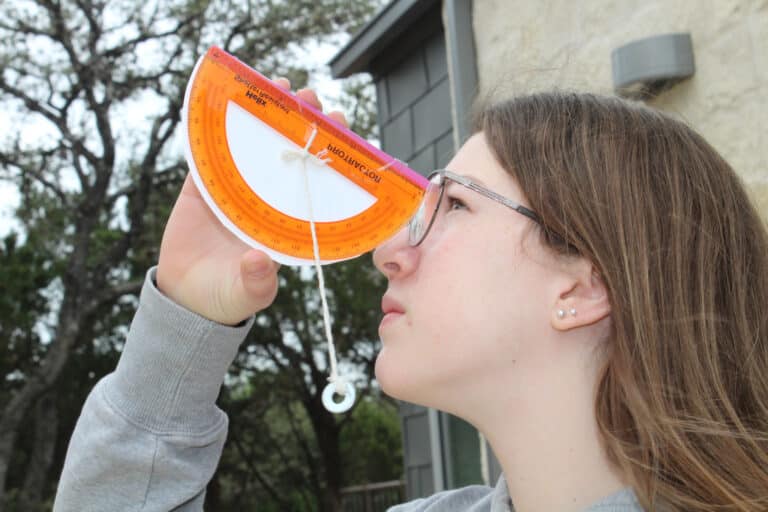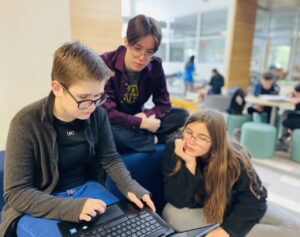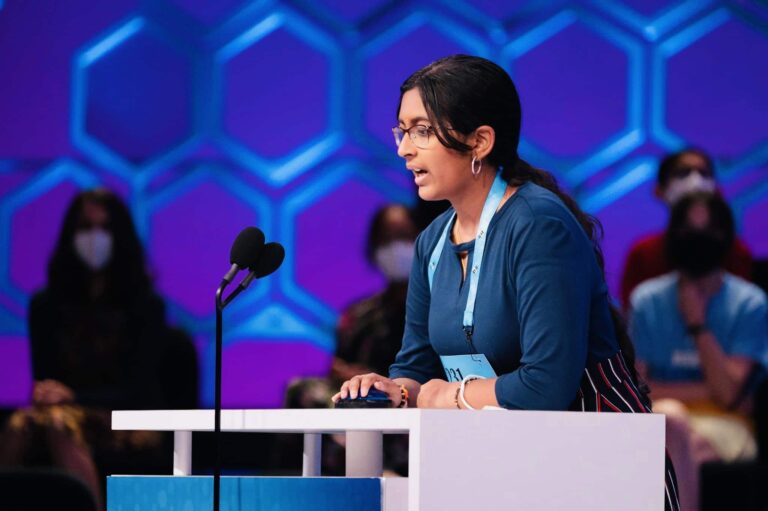Middle School
Middle School Program Ages 12-14 Years
A Bridge from Montessori Upper Elementary to High School
Students transition from Upper Elementary to Middle School with curriculum and systems that are aligned with traditional Montessori methods, including longer work periods and mixed-age groupings. Homework is thoughtfully and sensibly incorporated as students face more advanced academic challenges. Students continue to learn through discovery and action, becoming more sophisticated thinkers and problem solvers.


Education should therefore include the two forms of work, manual and intellectual, for the same person, and thus make it understood by practical experience that these two kinds complete each other and are equally essential to a civilized existence.”
- Dr. Maria Montessori, From Childhood to Adolescence
Rigorous and Rewarding Curriculum
A strong academic curriculum is at the core of MSSA’s program. As in other levels at MSSA, the Middle School students’ work embodies the Montessori principle of “learning by doing.” However, in preparation for high school, work is more departmentalized with math, science, English, and history occupying central places in the curriculum. Critical thinking exercises, leadership, skill-building, and student-led discussions are all part of the daily Middle School program. Middle School students take Spanish, Physical Education, and Art classes each week, and they also get to choose a Music elective. At this level, the culmination of Montessori education has developed from the concrete to the abstract with a depth and breadth of knowledge. The Middle School program prepares students for success in high school and beyond.
Community
The Middle School recognizes that meaningful social interaction between students is an essential component of fostering healthy social development. As such, students are provided with many opportunities to work together. In daily morning meetings, students’ contributions to the classroom and community are highlighted, and issues and concerns are addressed. Teachers are devoted to providing affirming relationships with each student and their parents. Parents are invited to student-led conferences to discuss strategies and plans that ultimately help students experience success.
Each year Middle School students participate in a three-day overnight outdoor education trip that focuses on team building. Likewise, eighth graders are invited to participate in Montessori Model United Nations. The MMUN program allows students to simulate positions in the United Nations while completing research that allows them to formulate position papers, prepare speeches, and hone their skills in debate. Students travel to New York City each Spring to participate in the MMUN conference with delegates from schools around the world.
Preparation for the Future
MSSA’s Middle School program is devoted to preparing students for the high school of their choice. Middle School students graduate confident in their skills in reading, writing, math, and science. They can think critically and can make professional presentations before groups. With a student-to-teacher ratio of 12:1, the Middle Program integrates rigorous academic studies with purposeful work and strives to support and encourage the potential of the individual student. The Middle School program prepares adolescents who contribute to their community and become self-confident adults.
MSSA graduates are notably successful in their subsequent academic careers and continue on to San Antonio’s finest public and private schools where they achieve distinguished records. Some of the public magnet high schools graduates attend include Health Careers High School, CAST Tech High School, STEM Academy at Lee High School, The International School of the Americas, and The Engineering and Technologies Academy at Roosevelt High School. Private schools include Central Catholic High School, Lutheran High School, Antonian College Preparatory High School, Incarnate Word High School, Keystone School, Saint Mary’s Hall, and TMI – The Episcopal School of Texas.


Middle School Core Curriculum
English
Mathematics
Middle School mathematics consists of three courses: Pre-Algebra, Algebra I, and Geometry. Pre-Algebra focuses on strengthening basic skills like fractions, decimals, and percent along with introducing the beginnings of algebra. Students learn to simplify expressions, solve equations, gather and interpret data, graph lines, and identify the components of a function. In Algebra I, students work at an advanced level in order to share their ideas through math. Students enter Geometry knowing how to represent algebraic thinking as an equation, graphically, through data, and as written word, and are introduced to logic and proof writing along with an intense study of parallel lines, polygons, circles, area, surface area, and volume. All classes focus on mastery of concepts and prepare students for success in high school Honors and AP courses.
Science
Middle School science engages the student’s natural curiosity to develop their own understanding of the world around them. Students are given opportunities to create models, engage in laboratory activities, and hone their understanding of the Scientific Method as well as their technical writing skills. Guided labs allow students to investigate topics more fully by asking “why” when analyzing outcomes. Mathematics is integrated to quantify, analyze, and display findings. Seventh Grade Science in an introductory biology class with a focus on how organisms are organized based on their cellular composition, and students gain an understanding of cellular processes and human body systems including homeostasis, reproduction, and heredity. Eighth Grade Science immerses students in physical sciences, with an introduction to chemistry and conceptual physics, as well as astronomy, weather, and geology.
History
Middle School students take one year of World History and one year of US History. They learn advanced reading and note-taking strategies, analyze and interpret primary source documents, evaluate historical arguments, role-play in simulations, engage in persuasive debates and essay writing, and work collaboratively in groups as social scientists to test historical hypotheses. World History spans the 4.2 billion years of human history, as students examine the chronology of eras, and analyze geography, religion, achievements, politics, economics, and social structures over time. US History covers every era from the first Americans prior to 1491 to the present, as students uncover the countless diverse experiences, adventures, failures, and triumphs that collectively tell the American story.
